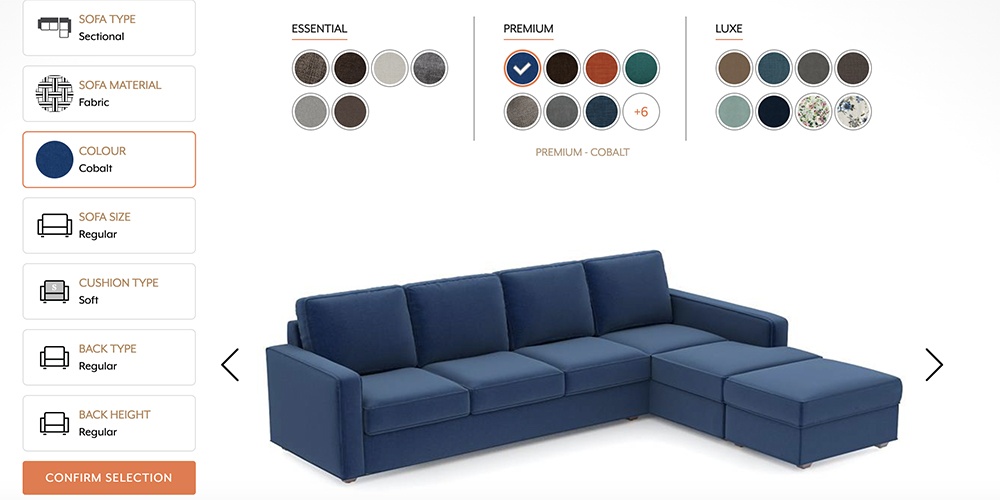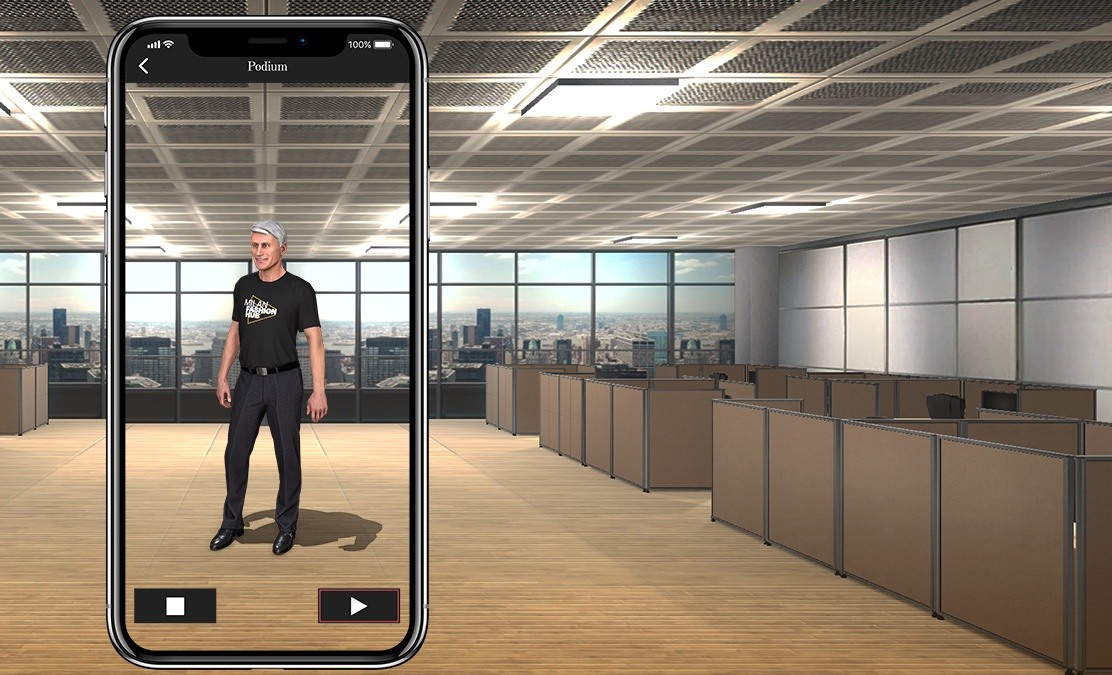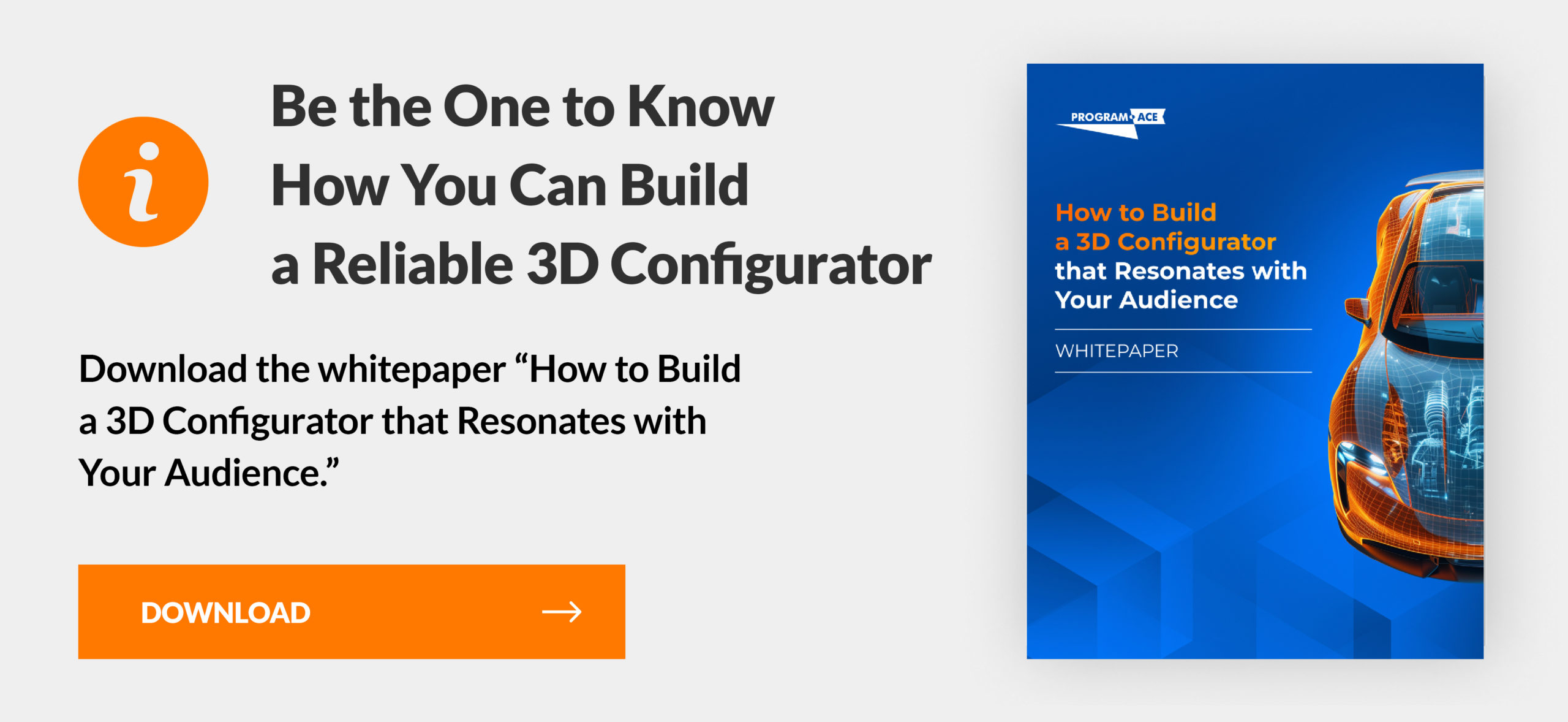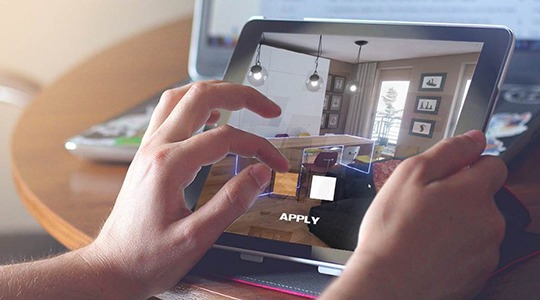As a result of the continuous growth of eCommerce, providers are looking for any avenue to capture a larger share of customers. Providing a tailored, personalized experience to customers has emerged as a very popular practice, and product configurators have risen as the #1 instrument of delivering it.
A product configurator, an interface where a user can customize a product model to their liking, is a perfect choice for the eCommerce industry and has a proven track record. Whether you are just now learning about a product configurator for eCommerce or want more in-depth information about how it can be implemented in your business, this article has all the information you need.
As a company that knows the ins and outs of creating a custom product configurator (having done so many times in the past), we will be relying on our expertise and the best practices in the industry.
What is Product Configurator ECommerce?
A product configurator eCommerce is a dynamic design utility that empowers users to personalize their desired products from a range of available configuration options. Particularly in e-commerce, this interactive tool engages users by enabling customization in color, print, text, images, textures, and beyond.
For instance, a visual configurator showcases various design possibilities in online T-shirt sales. Shoppers can experiment with different components like size, design, color, etc., visualizing their customized product effortlessly. With a few clicks, they gain a clear preview of their personalized item before purchasing.
Why use Product Configurator?
Studies reveal that consumers prioritize superior experiences, with a majority expressing a willingness to switch to competitors for better service. Additionally, there's a growing expectation for eCommerce platforms to minimize returns by offering accurate product configurator information. Clear images and detailed descriptions play a significant role in reducing return rates.
Optimizing customer experience is crucial for sustained business success, involving the reduction of friction and meeting customer expectations. Among other reasons to use product configurators are:
- Enhanced digital footprint and improved engagement on eCommerce platforms
- Higher conversion rates as customers are more likely to make purchases
- Reduced return rates due to clearer product builder eCommerce visualization
- Ability to showcase individual product configurator components, offering design flexibility
- Appeal to millennials and Gen-Z consumers through Augmented Reality experiences
Ensure that the solutions you select can adapt to the market's dynamic nature. Assess the technology's modularity and capacity to seamlessly integrate with existing ecosystems without disrupting ongoing operations.
Regardless of the chosen solution, one essential aspect must be prioritized. Implementing an effective mass customization strategy requires establishing a flexible workflow and product configurator functionality that can be accessed at any stage of its lifecycle.
Have your own idea?
Check out our configurator development services!
Benefits of a Product Configurator in ECommerce
For over a decade, the traditional approach to eCommerce has been “just put your inventory up on the website and let the customers choose.” However, this approach is flawed and does not fulfill the total needs of the customer or the business. To get a better sense of it, let’s examine how a 3D product configurator is superior.
- Higher client satisfaction
Customers love freedom, and giving them a broader choice of product builds works wonders in satisfying their needs and wants. They no longer need to settle for less or grudgingly select a product configurator eCommerce version that partially meets their expectations but doesn’t quite get there. - Better client-product-brand engagement
Through the interaction process, customers form an emotional bond with your product. They will be much more motivated to purchase a product after spending minutes (rather than the usual seconds) choosing it. This extra time with the product also helps them learn more about it and get acquainted with your brand. - Useful analytics
You can tell which product versions are most popular based on their sales, but customization takes this to a whole new level. Based on user choices in the product configurator for eCommerce, you can get much more detailed and insightful information about the colors, accessories, performance specs, and other aspects that customers like, even when other features do not get the same response. - Helps sales teams be more efficient
Configurators are usually designed to be much more than a visual reference. Many have a built-in order system that quickly takes them from seeing a product configurator for the first time to choosing their design and paying for it. This tendency towards autonomy helps sales teams spend less time educating and consulting clients and focus on other matters, such as securing bulk sales. - Prestige
Building an in-house customization solution is something that grabs attention and, accordingly, can be used to garner good press. Even creating something that your competitors do not have can generate months of good publicity and push you to the front of the pack, at least in the eyes of the public.
What are the 2 Key Types of Product Configurators?
If we look at how configurators are presented and provide their customization features, we can single out two distinct types deployed on websites and other platforms – static and dynamic.
Static

Static configurators are all about taking you from one place to another. The order of things happening goes like this: you see one product configuration -> you select a new customization option -> a new visual representation of the product configurator loads. Static configurators are a legacy type, usually using photos to visualize a product and deployed through a website with hundreds of links and pages, with a single page ready to load based on user choice.
Example: Urban Ladder
Urban Ladder is a primary online furniture provider that mainly customizes furniture aspects, like color and material. They mainly visualize products through photos, and selecting any customization option causes a new page to load.
Dynamic

Real-time configurators offer a seamless experience. This means that when you select a customization option, you don’t have to wait for a new page to load, and everything happens in front of your eyes in a fraction of a second. Usually, the content is preloaded as soon as a user launches the configuration app and is normally presented in 3D form. Sometimes, an eCommerce product builder eCommerce will have a whole catalog of products you can switch between effortlessly.
Example: FashionTek
FashionTek is an emerging clothing brand that decided to create a product configurator in the format of a dressing room. Program-Ace built this software, featuring digital avatars for shoppers and dozens of clothing items they could customize and try on their avatars.
Best Practices for Building a Product Configurator
Obviously, the information needed to create this kind of solution can’t be condensed into a handful of tips, but we want to help you with two critical aspects of the planning process – choosing how to deliver the product configurator to customers (platform), and what you want to include in it (features).
Choosing a platform
Web
An online presence is essential in any eCommerce business, so deploying the configurator directly on a website makes sense. This is helpful because users on all devices with internet-browsing capability can access it. At the same time, most web product configurators require a constant internet connection and may take a while to load on mobile internet, limiting users’ freedom.
Mobile
Mobile product configurators are often built to be an extension of a robust web offering and targeted toward faithful customers who already have a history with the company. It is much easier for them to open an optimized app on the go and get what they need than to sort through web pages in their mobile browser. However, most new and potential customers frown upon downloading a new app just to get a basic online service.
Immersive
In rare cases (mostly for expensive and luxury products), configurators are developed for virtual or augmented reality. VR requires a special headset but provides very up-close and personal interactions with products. An AR product configurator can be delivered through a mobile app or, in some cases, through a browser using WebAR technology.
Choosing application features
-
Rotation/zoom
(Look around and see a product from all angles. Sometimes even from within)
-
Animation
(Demonstrating how the object works and how it should be used safely)
-
Text hints
(Contain key information about product builds and specific customization options)
-
Payment gateway
(Customers can place an order right after choosing a build they like)
-
Environmental simulation
(3D products are visualized in a realistic environment, sometimes based on captures of a user’s surroundings)
FYI, the five features above hardly represent the full scope of functionality you can implement in the software. Still, they are the most popular beyond the core features of product variety selection and update. You are welcome to think outside the box and devise other ways to make your product configurator solution valuable and unique. For example, a manufacturing product configurator eCommerce may need a bulk order option.
How to Build 3D Product Configurator ECommerce Software
Once you build your configurator, you must consider how you’ll go about the process – building everything in-house or delegating some work to a partner.
Independently
If you choose to craft a configurator, you will need software developers. They will be responsible for creating the interface and functionality of your solution and integrating it with your existing services, whether this means implementing it on your website or packaging it into a separate application and releasing it on your marketplace of choice.
Unfortunately, most eCommerce providers don’t have such experts and need to hire them, which sometimes takes weeks or months. Learning or teaching to code will probably be out of the question since it takes months to learn how to make even the most straightforward app.
The other challenging aspect of development will be asset creation. If you go with a simple configurator, you can just use some photos and videos as visual assets, but for all other situations, you’ll need 3D models, which 3D artists typically create. The talent and hiring situation here is similar to the one with developers.
With a partner
Working with a partner is an ideal solution for companies that lack the resources to get their project off the ground. This will usually be a company with plenty of experts available to handle project work.
Ideally, you should find somebody with a good combination of experience and cost, a large team available, and a flexible attitude towards your project (being ready to adapt to changing circumstances and requirements). As for the matter of product configurator cost, you can get a great price by pulling a team from a region with a thriving IT talent market full of educated specialists.
Program-Ace is a provider ready to give you the best of both worlds. Building configurators is one of our greatest strengths; we have multiple successful cases to prove it. Our company has a large team with all the specialists you need – developers, 2D/3D artists, QA engineers, business analysts, and many more. Thus, we are more than ready to help with your project. Let's work together, contact us.
























